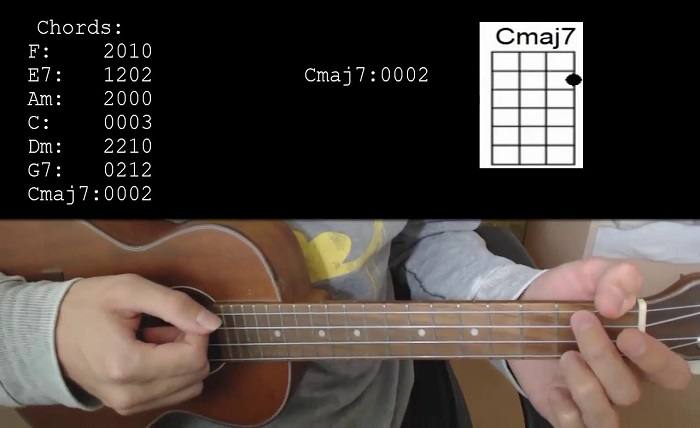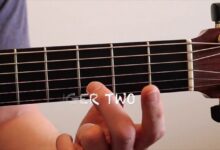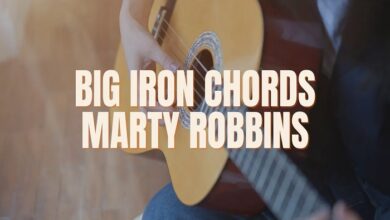How to Play Listen Chords on Guitar

Listen chords are a type of chord progression that uses the notes of the major scale in a specific order. They are also known as diatonic chords, because they are derived from the diatonic scale, which is the most common scale in Western music. Listen chords are useful for creating melodies, harmonies, and songs that sound pleasing and natural.
What are Listen Chords?
Listen chords are based on the seven notes of the major scale: C, D, E, F, G, A, and B. Each note has a corresponding chord that is built by stacking thirds from the scale. For example, the chord for C is C-E-G, the chord for D is D-F-A, and so on. The chords are named after the Roman numerals that represent their position in the scale. For example, C is I, D is II, E is III, and so on. The chords are also classified by their quality: major, minor, or diminished. Major chords have a bright and happy sound, minor chords have a dark and sad sound, and diminished chords have a tense and unstable sound. The quality of each chord depends on the intervals between the notes. For example, C-E-G has a major third (four semitones) and a perfect fifth (seven semitones), so it is a major chord. D-F-A has a minor third (three semitones) and a perfect fifth, so it is a minor chord. B-D-F has a minor third and a diminished fifth (six semitones), so it is a diminished chord.
Beyonce Knowles - Listen Capo on 2nd D - xx0232 or x57775 D/F# - 200232 F#m - 244222 C#m7 - x46454 E7 - 020100 D/A - 557775 E/G# - 422100 or 476454 [Verse 1] A E Listen F#m C#m7 To the song here in my heart D E A melody I start but can't complete A E Listen (mmm) F#m C#m7 To the sound from deep within D E It's only beginning to find release C Oh, the time has come E7 For my dreams to be heard Am G They will not be pushed aside and turned F E (or E7) Into your own, all 'cause you won’t listen [Chorus] A Listen E I am alone at a crossroads F#m I'm not at home in my own home E And I've tried and tried D To say what's on my mind E You should have known A E Oh, now I'm done believing you You don't know what I'm feeling D/F# E/G# I'm more than what you made of me C#m7 F#m I found the voice you gave to me D/A E But now I've got to find my own [Verse 2] A E You should have listened F#m C#m7 There is someone here inside D E Someone I thought had died so long ago C Oh, I'm screamin out E7 And my dreams will be heard Am G They will not be pushed aside or worse F E (or E7) Into your own, all 'cause you won't listen [Chorus] A Listen E I am alone at a crossroads F#m I'm not at home in my own home E And I've tried and tried D To say what's on my mind E You should have known A E Oh, now I'm done believing you You don't know what I'm feeling D/F# E/G# I'm more than what you made of me C#m7 F#m I found the voice you gave to me D/A A - G# - G - F# - C (slide down fret by fret But now I've got to find my own then jump to C) [Bridge] C E7 I don't know where I belong Am G But I'll be moving on F E (or E7) If you don't, if you won't A E Listen F#m C#m7 To the song here in my heart D E A melody I start but I will complete [Chorus 2] A E Oh, now I'm done believing you You don't know what I'm feeling D/F# E/G# I'm more than what you made of me C#m7 F#m I found the voice you think you gave to me D/A E A But now I've got to find my own, my own [Ending] A
How to Play Listen Chords on Guitar
To play listen chords on guitar, you need to know how to find the notes of the major scale on the fretboard. One way to do this is to use the CAGED system, which divides the fretboard into five shapes based on the open chords C, A, G, E, and D. Each shape contains three notes of the major scale, and by moving the shapes up or down the neck, you can play the scale in any key.
For example, to play the C major scale using the CAGED system, you can use these shapes:
![CAGED shapes for C major scale]
The red dots indicate the root notes of each shape, which are also the notes of the I chord ©. The blue dots indicate the other notes of the scale. By playing these shapes in order from left to right, you can play the C major scale across the fretboard.
To play listen chords using the CAGED system, you need to know how to build chords from each shape. Each shape has a corresponding chord shape that uses the same root note and two other notes from the scale. For example, the C shape has a C chord shape that uses C-E-G, the A shape has an Am chord shape that uses A-C-E, and so on.
Here are the chord shapes for each CAGED shape:
![Chord shapes for CAGED shapes]
The red dots indicate the root notes of each chord shape, which are also the notes of the listen chord. The blue dots indicate the other notes of the chord. By playing these chord shapes in order from left to right, you can play listen chords across the fretboard.
How to Use Listen Chords in Songs
Listen chords are very common in songs of various genres and styles. They can be used to create simple or complex chord progressions that support different melodies and moods. Some examples of songs that use listen chords are:
- Let It Be by The Beatles: This song uses listen chords in the key of C major. The chord progression is I-V-vi-IV (C-G-Am-F) for most of the song, except for the bridge where it changes to vi-IV-I-V (Am-F-C-G).
- Wonderwall by Oasis: This song uses listen chords in the key of F# minor. The chord progression is vi-IV-I-V (F#m-D-A-E) for most of the song, except for the pre-chorus where it changes to ii-vi-IV-V (Bm-F#m-D-E).
- Someone Like You by Adele: This song uses listen chords in the key of A major. The chord progression is I-V-vi-iii-IV-I-IV-V (A-E-F#m-C#m-D-A-D-E) for most of the song, except for the chorus where it changes to vi-IV-I-V (F#m-D-A-E).
Conclusion
Listen chords are a type of chord progression that uses the notes of the major scale in a specific order. They are useful for creating melodies, harmonies, and songs that sound pleasing and natural. To play listen chords on guitar, you can use the CAGED system, which divides the fretboard into five shapes based on the open chords C, A, G, E, and D. Each shape contains three notes of the major scale, and by moving the shapes up or down the neck, you can play the scale and the chords in any key. Listen chords are very common in songs of various genres and styles, and they can be used to create simple or complex chord progressions that support different melodies and moods. Listen chords are a great way to improve your guitar skills and musical creativity.







